There was never a time in my life when I wasn’t at least somewhat fascinated by trains, train tracks, and train stations. Perhaps it was the tracks running near my house that served as an illicit playground when I was ten years old. Maybe it was the frightening grandeur of Grand Central Terminal and Penn Station in Manhattan later in life. No matter. Today, we have Architecture for the Soul - American Train Stations.
Chicago Union Station
This legendary station opened in 1925 after ten years of construction. Daniel Burnham developed the original concepts for the station. According to the Chicago Architecture Center:
Union Station was originally built by a consortium of four railroads: Pennsylvania Railroad; Chicago, Burlington and Quincy Railroad; Michigan Central Railroad; and the Chicago, Milwaukee and St. Paul Railway. Architect Daniel Burnham envisioned the station as a major element in the development of the West Loop in his 1909 Plan of Chicago. He considered it prudent to consolidate train stations…
Burnham passed away in 1912, and Graham, Anderson, Probst, and White took over the architectural work. Generally speaking, the station is an example of the Beaux-Arts style espoused by Burnham. There are so many delectable architectural elements here. We could spend 10,000 words. Here are just a few.
The exterior is the fabled Indiana limestone, which, in this case, was quarried in Bedford, Indiana. As shown above, this stone has been a go-to architectural material for American architects for over a century, and Union Station in Chicago is a classic example.
The station's Main Hall is dominated by the barrel-vaulted skylight over 100 feet above, which was blacked out during World War II for security purposes.
The long, elegant oak benches scream 1940s black-and-white cinema.
Los Angeles Union Station
The history of Union Station in Los Angeles is a glimpse into the myths and realities of the Golden West and the State of California. According to the station website:
The Station was commissioned in 1933 as a joint venture between the Southern Pacific, Union Pacific, Atchison, Topeka and Santa Fe railroads and was intended to consolidate the three local railroad terminals.
John and Donald Parkinson, a father-son team of California architects, were chosen to design the project. The facility opened in 1939 as the "Last of the Great Railway Stations" to be built in America. Various other architects assisted with the design, and perhaps this can explain the seemingly blended architectural styles in evidence. The station website describes this as:
An innovative blend of Spanish Colonial, Mission Revival and Art Deco architecture now commonly referred to as Mission Moderne.
Having spent many years in the tile and stone space, I was naturally drawn to the terracotta flooring, which makes an exclamation point in California style.
Washington D.C. Union Station
As shown above, we quickly crossed the country to Washington, D.C., where we found Washington Union Station. Any building with architect Daniel Burnham on its “resume” has an instant amount of “street cred.” Amongst the many quotes attributed to Burnham is: “Make no little plans; they have no magic to stir men’s blood.” By any measure, Union Station was designed to “stir men’s blood” in sweep and grandeur.
According to the station’s fine website:
During its heyday in the early 1940s, Union Station was a thriving transportation hub serving up to 42,000 passengers daily. After 1945, conditions deteriorated quickly. The demand on transportation during World War II wore greatly on the station.
Planes and cars began to occupy the public psyche as modern airports and interstate highways beckoned and train stations lost a bit of their glamour.
Today, Union Station has survived benign neglect, a runaway train in 1953, an earthquake in 2011, and more visiting schoolchildren than anyone can count. Yet, the epic arches, patterned stone floors, and coffered ceilings of the Main Hall still present a scale and elegance fitting of Burnham and his “make no little plans.”
Philadelphia 30th Street Station
Philadelphia’s 30th Street Station is exactly what you imagine might serve as a grand urban railway hub. Hanging out there gives the impression that the old cliche about “they don’t build ‘em like this anymore” might be true.
The architects were Graham, Anderson, Probst & White of Chicago, who completed the project in 1934. The exterior leaves a mark on your memory. It has the majesty and scale that was once associated with excellence in public transportation as described below by the website Great American Stations:
It is an example of some of the railroad industry’s most monumental construction and is architecturally interesting for its use, adaptation and transformation of the Neoclassical style into a more modern, streamlined Art Deco style. The exterior of the building features typical neoclassical elements such as seventy-one-foot-high Corinthian columns forming impressive porticoes on the east and west facades, rendered in Alabama limestone.
Officially, this building is the William H. Gray III 30th Street Station, which is currently undergoing a fairly major renovation. Amtrak, a major player here, has never entirely turned Americans toward train travel, but it continues to make an effort. I wish all parties the best in moving our train travel experience forward.
Cincinnati Union Terminal
The Cincinnati Union Terminal opened in 1933 and was designed by Fellheimer & Wagner, an architectural firm with a train station design history. Alfred Fellhiemer had been the lead architect for Grand Central Terminal in New York when he had been with Reed & Stem. A great website, art deco.org, tells the back story of the building design:
The station was originally designed to be a grand neoclassical building with columns and arches. But after two years of construction, the owners asked the architects, Fellheimer & Wagner, to redesign the building in an up-to-date, less expensive style. Fellheimer & Wagner tasked its talented young architect Roland A. Wank, along with the French-born consultant and architect Paul Philippe Cret, to redesign the building in the modern style now known as Art Deco.
Cincinnati Union Terminal was a functioning train station until 1972. Sadly, from 1972 to 1980, significant portions of the unused facility were demolished. Into that vacuum stepped two Cincinnati museums that funded the Cincinnati Museum Center. The restoration of the terminal can best be seen in the video below:
Americans are not always great at architectural preservation. But here in Cincinnati, there is an exception.
Boston South Station
South Street Station, which opened in 1899, was designed by architects Shepley, Rutan, and Coolidge. the firm survives today as Shepley Bullfinch, headquartered in Boston. Situated on a corner, the station facade is New England granite and features a unique grouping of Ionic columns without the fluting typically associated with them. Crowning it all is a clock inspired by Big Ben in London and an 8-foot stone eagle.
South Station Tower, a long-discussed redevelopment designed by Pelli Clarke & Partners, is now scheduled to open in mid-2025. We can only guess at the final architectural critic’s reviews, but the reimagined concourse below is promising.
My experience using South Street Station is somewhat limited. I recall it as a bustling place that displayed most of the grittiness that might have been expected from American urban mass transit. Time will tell what the redevelopment will yield.
Conclusion
It is an article of faith that European and Asian rail systems exist to transport passengers, while America’s system primarily transports freight. According to data collected by WorldPopulationReview.com, in 2024, the United States rail system had approximately 10 million passengers. This places the U.S. behind much smaller countries such as Croatia, Slovenia, and Luxembourg. Ouch!
As we know, data can be used to support almost any conclusion if you are willing to try hard enough. Nevertheless, it is safe to say that Americans have never quite felt the allure of the train travel experience, opting instead for the somewhat uniquely American automobile “road trip.” That said, the stations in this post are architectural achievements that raise the playing field of a society. Thanks for reading!





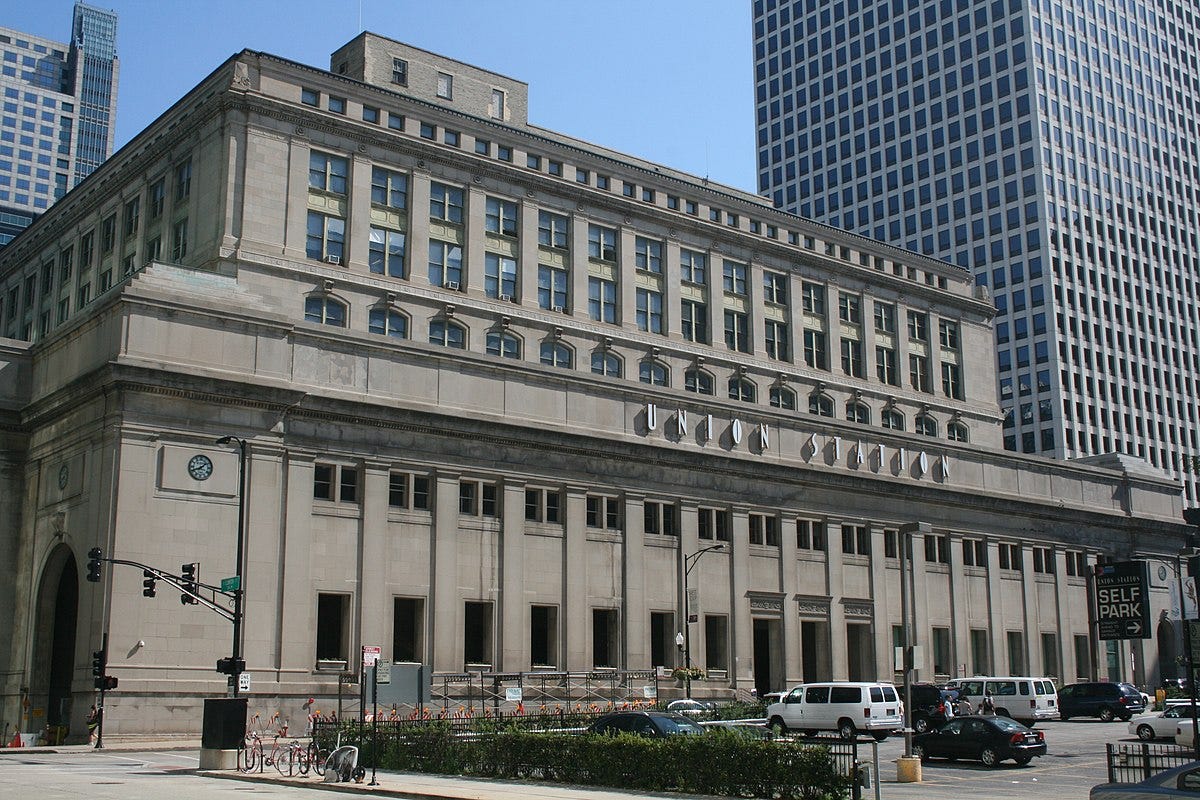



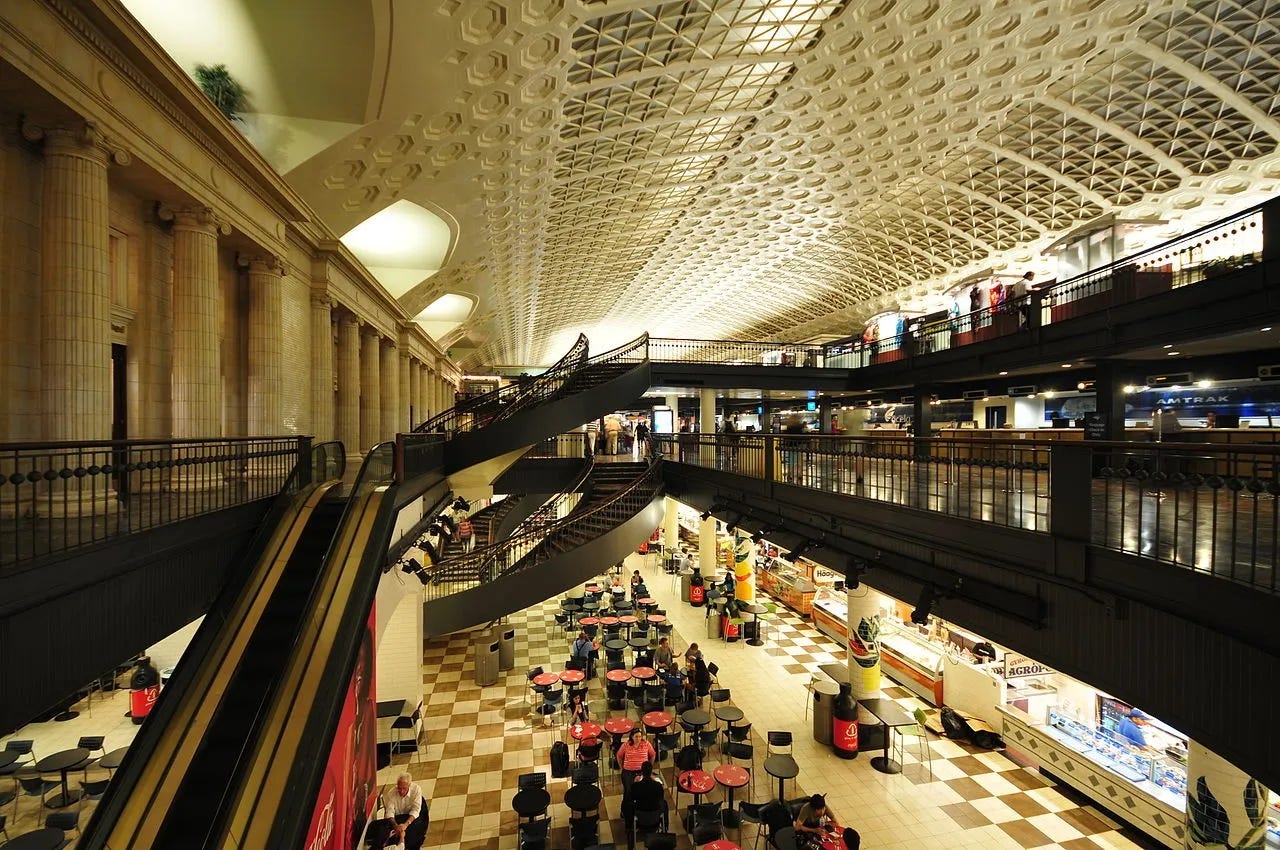
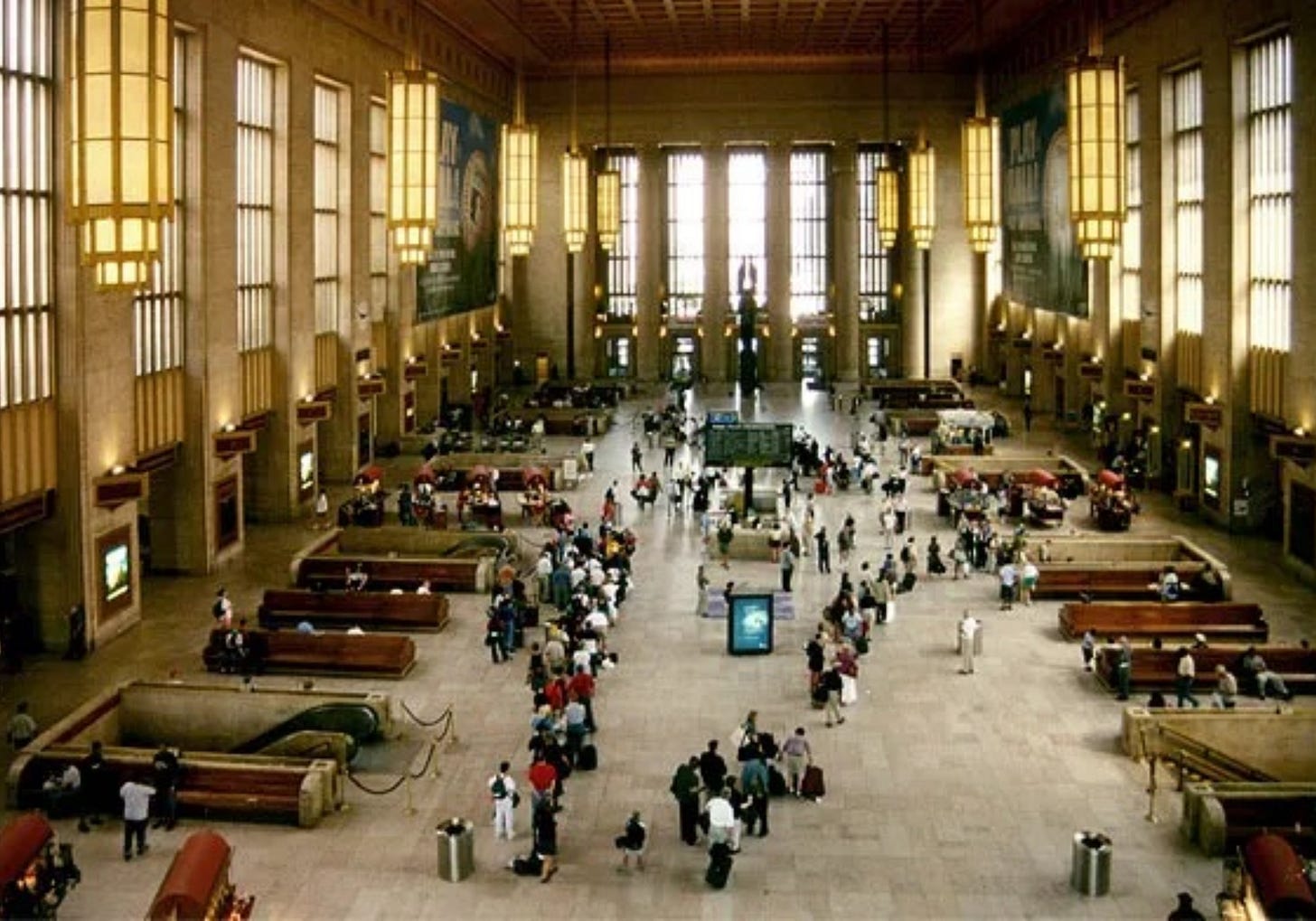
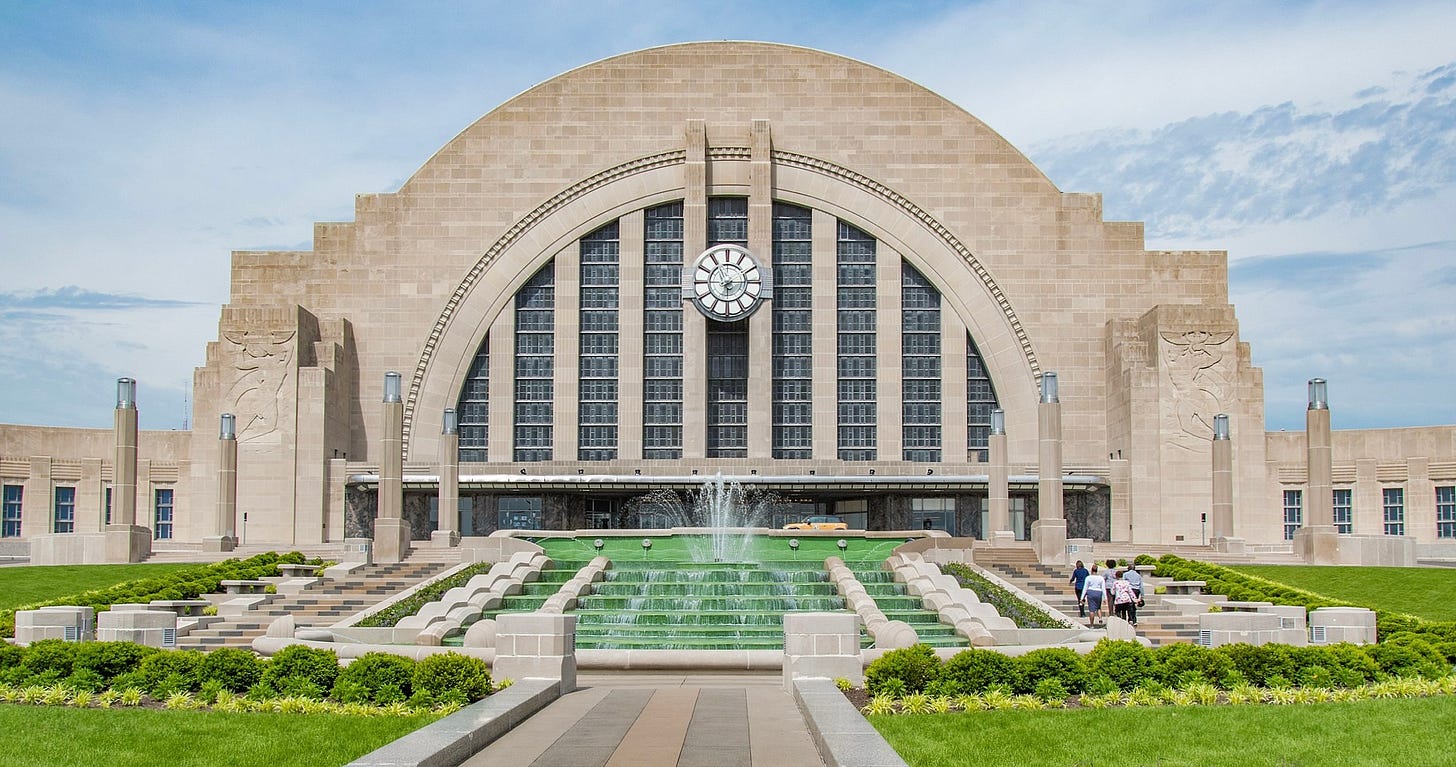
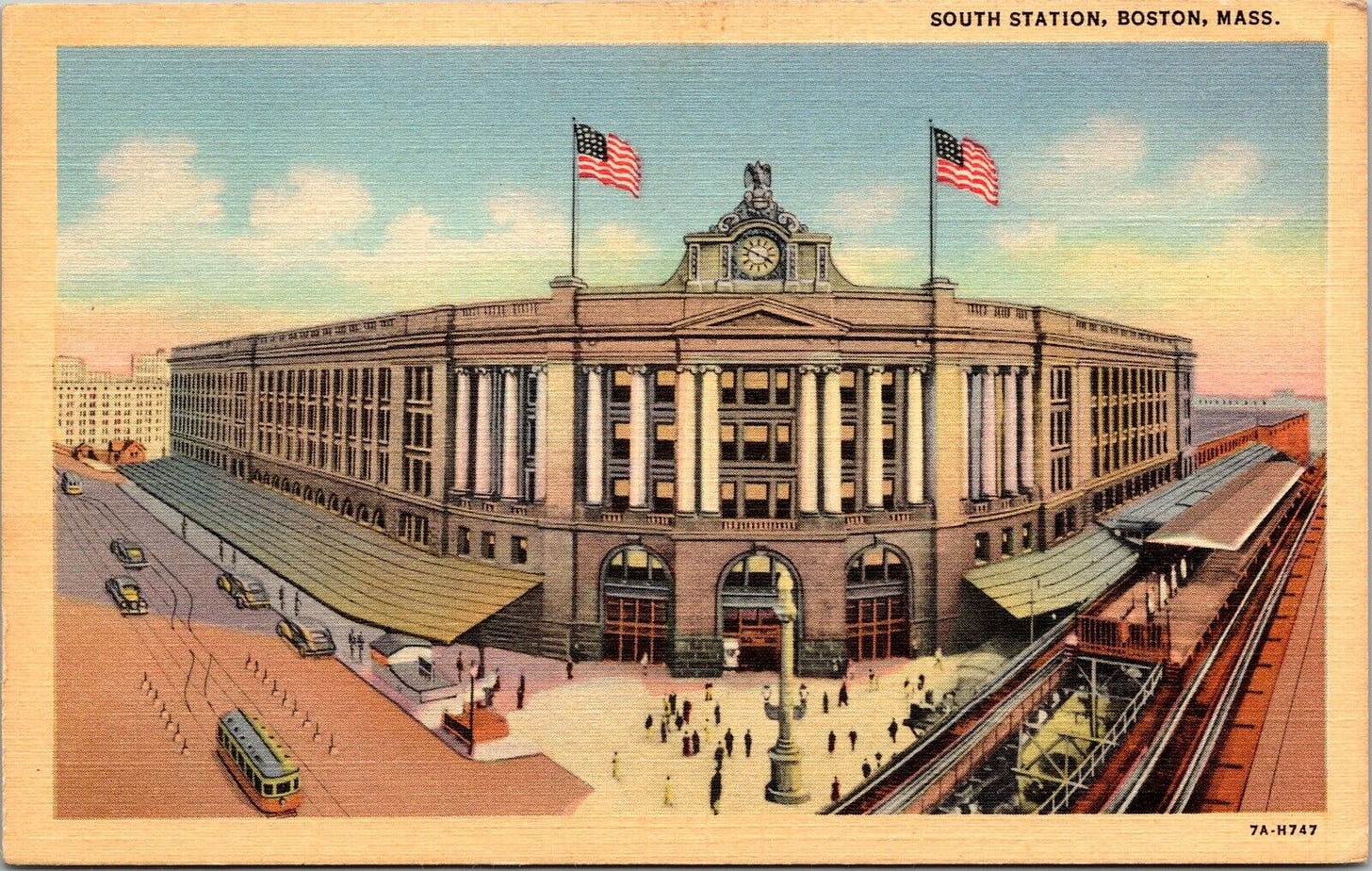
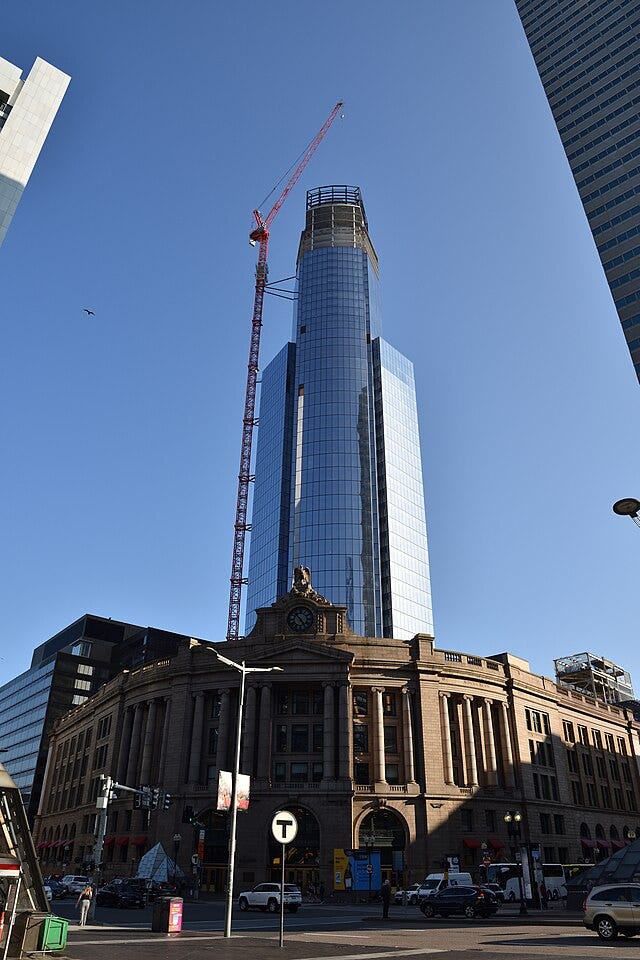
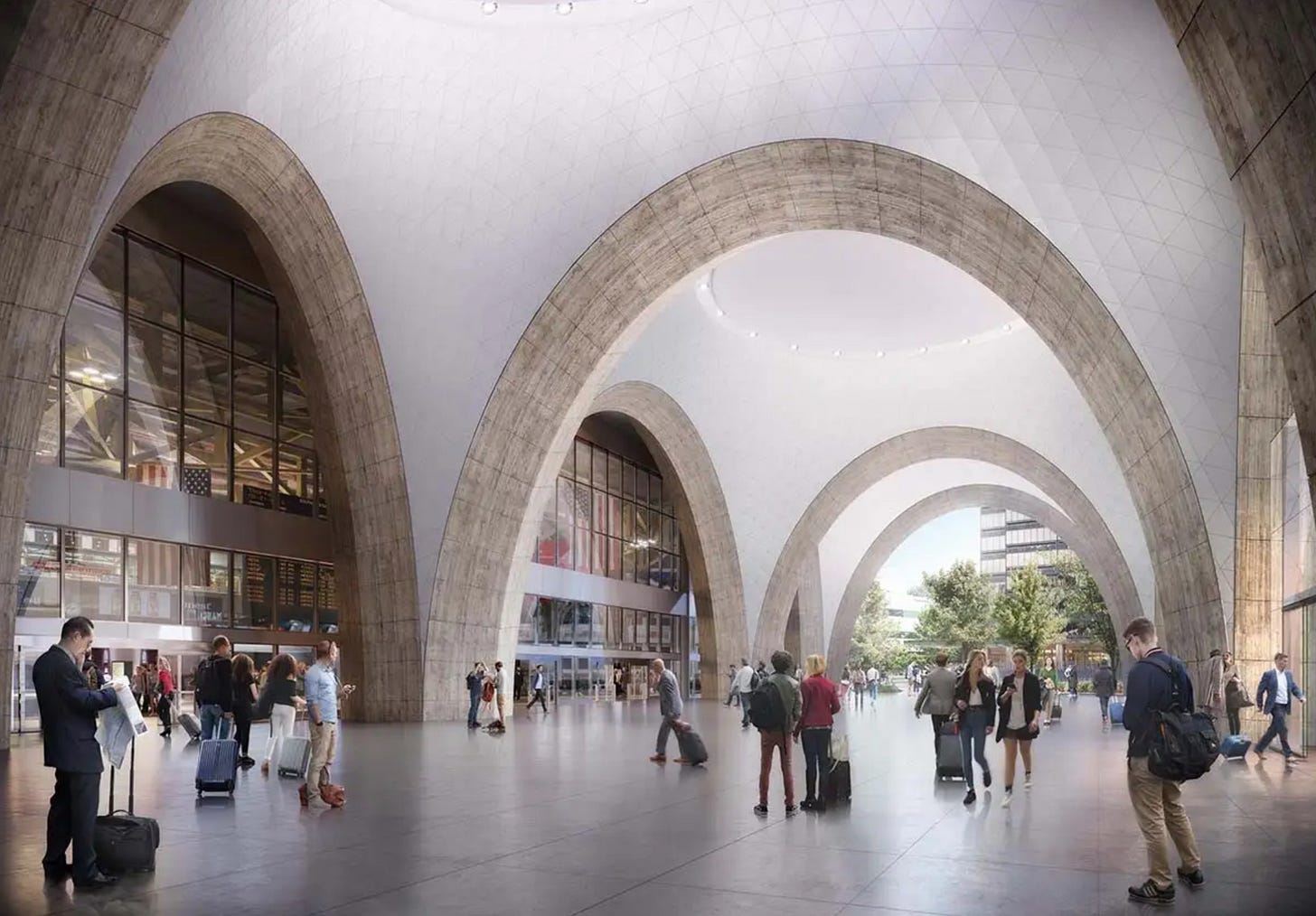
Really awesome John, I actually walk through Chicago Union on my commute to work hahaha. I feel like contemporary design for train halls feel so different from the old. Like, they cold and lack the resonance of the halls you've shown. Any way to bring that back in today's architectural climate?
Thanks